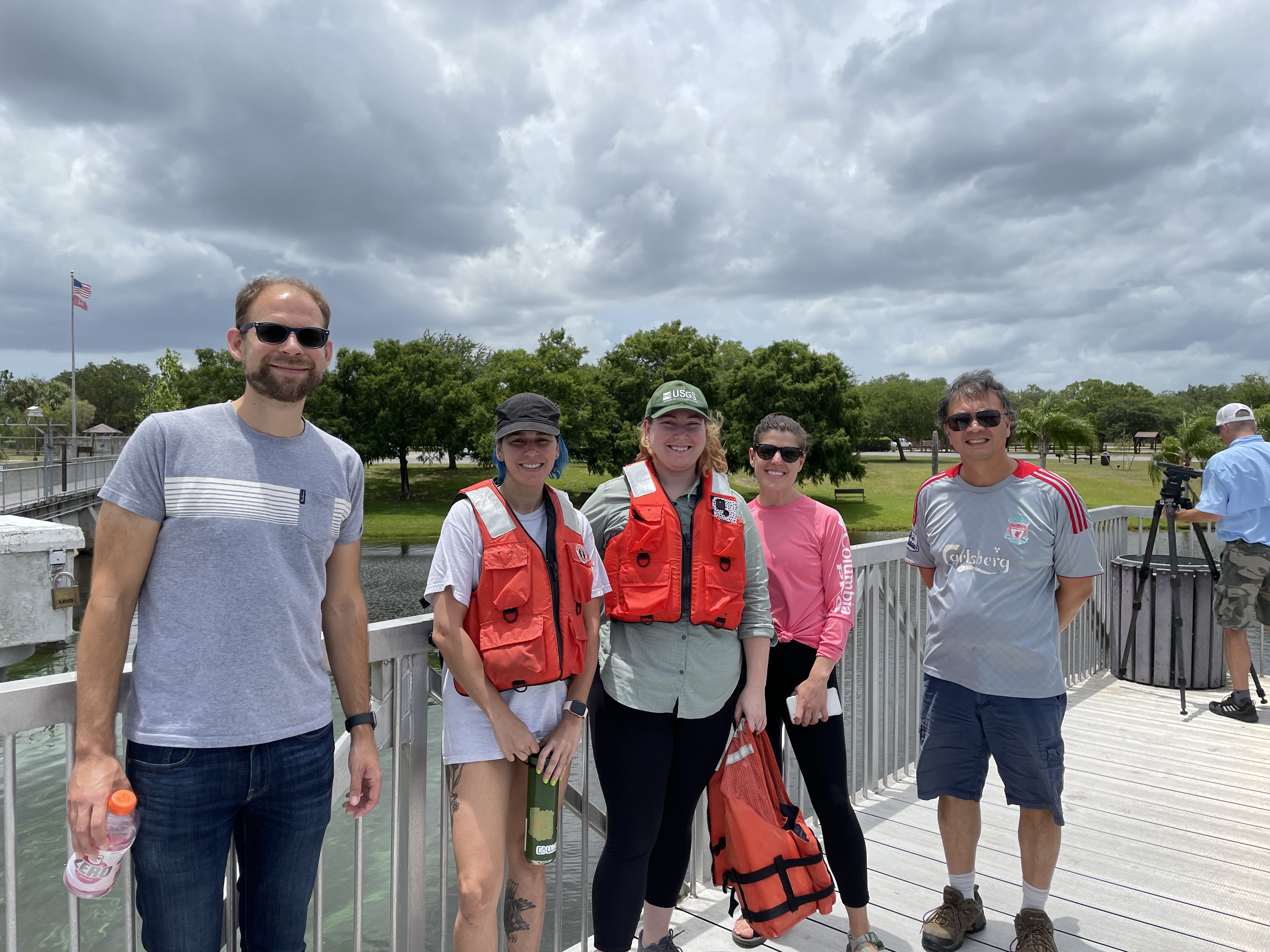We’re talking algae blooms, that phenomenon that happens in waterways around Florida. And since 2019, researchers at Nova Southeastern University’s (NSU) Halmos College of Arts and Sciences have been studying them with the primary goal to find out why they occur.
“Once we understand what makes these blooms occur, we can work to determine how to not only deal with them when they do, but what steps can be taken to help avoid them in the first place,” said Jose Lopez, Ph.D., an NSU research scientist and principal investigator on this project.
Harmful algae blooms (HABs) can choke off the life in the waterways in which they occur, and they can pose a threat to humans on land because when the photosynthetic bacteria die off, they can release toxins. The Molecular Microbiology and Genomics (MMG) Laboratory at NSU’s Guy Harvey Oceanographic Center has been studying HAB microbial communities in Lake Okeechobee in order to better understand their origins and management.
Along with Lopez, the research was conducted by Lauren Krausfeldt, Ph.D., who joined the NSU lab as a postdoctoral research scientist. As part of this research project, Krausfeldt rigorously applied the latest molecular genomics methods to the HAB problem. The primary findings of this work are still being fully analyzed, but they include:
- There are many cyanobacterial species in the community, not just the one species, that may be causing the bloom. Therefore, there are dynamics between community members that we are trying to understand which regulate how a bloom occurs.
- Bacterial viruses (phage) may also be regulating the community and bloom.
- However, the bloom bacteria, Microcystis, has CRISPR genes that can defend against the phages and give them advantage and allow them to bloom.
- A metagenomics approach has mainly revealed the above discoveries, because it does not rely on directly growing live cells. We can infer function and roles by reading the DNA and specific genes.
You can read the full article in science.org.
“The project has been highly collaborative, as we have worked with various scientists and students from the U.S. Geological Survey and Florida Gulf Coast University, and we are seeing the fruits of our work now,” said Lopez.
Lopez said that the ultimate goal is to better understand the dynamics of microbial interactions, what factors may create imbalances, and thus help managers alleviate HABs on our precious freshwater ecosystems.
* This research was or is sponsored by the Department of Defense, and that the content of the information does not necessarily reflect the position or the policy of the government, and no official endorsement should be inferred.
Be sure to sign up for NSU’s RSS feed so you don’t miss any of our news releases, guest editorials and other announcements. Please sign up HERE. You can also follow us on Twitter @NSUNews.
###
About Nova Southeastern University (NSU): At NSU, students don’t just get an education, they get the competitive edge they need for real careers, real contributions and real life. A dynamic, private research university, NSU is providing high-quality educational and research programs at the undergraduate, graduate, and professional degree levels. Established in 1964, the university includes 14 colleges, the 215,000-square-foot Center for Collaborative Research, the private JK-12 grade University School, the world-class NSU Art Museum Fort Lauderdale, and the Alvin Sherman Library, Research and Information Technology Center, one of Florida’s largest public libraries. NSU students learn at our campuses in Fort Lauderdale, Fort Myers, Jacksonville, Miami, Miramar, Orlando, Palm Beach, and Tampa, Florida, as well as San Juan, Puerto Rico, and online globally. With more than 200,000 alumni across the globe, the reach of the NSU community is worldwide. Classified as having “high research activity” by the Carnegie Foundation for the Advancement of Teaching, NSU is one of only 59 universities nationwide to also be awarded Carnegie’s Community Engagement Classification, and is also the largest private institution in the United States that meets the U.S. Department of Education’s criteria as a Hispanic-serving Institution. Please visit www.nova.edu for more information.
About NSU’s Halmos College of Arts and Sciences and Guy Harvey Oceanographic Research Center: The college provides high-quality undergraduate and graduate education programs in a broad range of disciplines in the natural sciences, humanities, social sciences, and the arts. Halmos College faculty, researchers, staff, and students pursue studies and investigations in all of these fields and in interdisciplinary projects. Excellence in teaching, research, and community engagement are at the forefront of the College’s many initiatives. The Guy Harvey Oceanographic Research Center hosts cutting edge research in the marine sciences focusing on the biology, conservation, and physical aspects of the tropical and subtropical ocean environments. Please visit hcas.nova.edu for more information.


